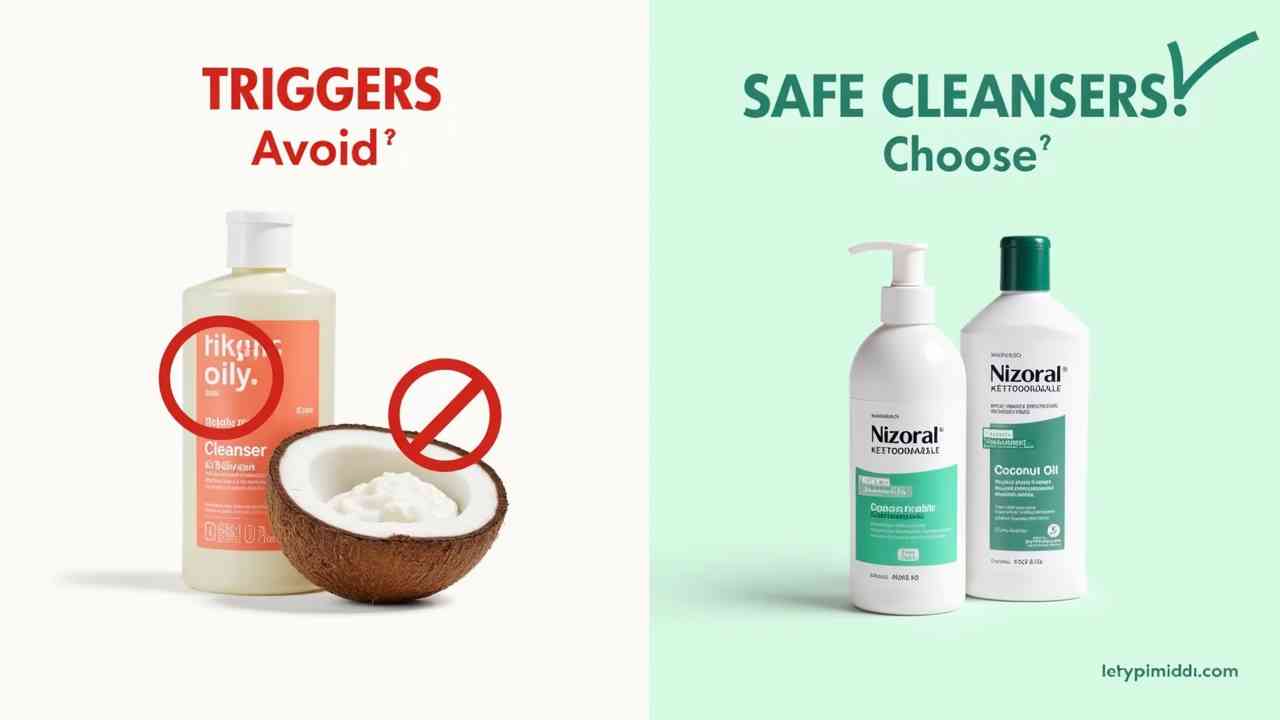
🧼 The Best Cleansers for Fungal Acne-Prone Skin (A Dermatologist's Guide)
🧼 A Dermatologist's Guide to the Best Cleansers for Fungal Acne 🧼
❗ Important Medical Disclaimer: The condition known as "fungal acne" is medically termed Malassezia folliculitis. If you suspect you have this condition, you must get a proper diagnosis from a board-certified dermatologist. This guide is for informational purposes only.
If you are dealing with small, uniform, itchy bumps on your forehead, chest, or back that do not respond to traditional acne treatments, you might have fungal acne. This is not true acne at all. It is an infection of the hair follicle caused by an overgrowth of a yeast called Malassezia.
This means it requires a completely different treatment approach. Choosing the right cleanser is the most important first step. This guide will show you the best cleansers for fungal acne prone skin and the ingredients you must avoid. ✅
🤔 What is the #1 Rule for a Fungal Acne Cleanser?
The single most important rule is to avoid ingredients that feed the yeast. The Malassezia yeast thrives on most oils and fatty acids. This is the opposite of what is good for a normal dry skin type. Many common, moisturizing skincare ingredients can make fungal acne much worse.
You must become a savvy ingredient-list reader. You need to avoid most fatty acids, esters, and fermented ingredients. A simple, minimal formula is always your safest bet.
- What Are the Most Effective Cleanser "Hacks"?
Because fungal acne is caused by a yeast (a type of fungus), the most effective cleansers are actually anti-dandruff shampoos. Dandruff is also caused by the Malassezia yeast. These shampoos contain powerful anti-fungal ingredients. They are the go-to treatment recommended by dermatologists.
1. Why is Ketoconazole Shampoo the Gold Standard?
A shampoo containing 1% Ketoconazole (like the brand Nizoral) is the number one choice. It is a powerful anti-fungal that is very effective at killing the yeast. The best way to use it is not as a quick wash, but as a short-contact mask.
How to use it: Apply a thin layer of the shampoo to the affected area (your face, chest, or back). Let it sit for 5 to 10 minutes. Then, rinse it off thoroughly. Do this a few times a week to get the breakout under control.
2. What About Pyrithione Zinc Soap?
Another excellent option is a cleanser that contains Pyrithione Zinc. This is another anti-fungal ingredient found in many dandruff shampoos and soaps. A gentle, solid bar soap form, like the Vanicream Z-Bar, is a great, less-drying option for sensitive skin.
- What Regular Cleansers Are Safe for Daily Use?
On the days you are not using a medicated cleanser, you need a simple, "fungal acne-safe" option. The key is to find a very basic formula without any of the triggering oils or esters. The best cleansers for fungal acne prone skin for daily use are often simple gel or micellar water formulas.
Look for very simple, water-based gel cleansers. Micellar water is also a great option for a first cleanse to remove makeup or sunscreen. Just be sure to follow it up with a real, water-based cleanser.
🚫 What Ingredients Should You Absolutely AVOID?
This is a crucial list. Most oils and fatty acids will feed the Malassezia yeast. A general rule is to avoid any ingredient with a long, complicated name that ends in "-ate." Here are the main culprits to avoid:
- Most oils (coconut oil, olive oil, etc. MCT oil is an exception and is safe).
- Fatty Acids (like Lauric Acid, Myristic Acid, Oleic Acid).
- Esters (ingredients like Polysorbate 20, 40, 60, 80).
The changing weather of the autumn season here in Bursa can be tricky. While the air gets drier, you must still be careful not to use heavy, oily creams that could trigger a flare-up. Sticking to a simple, safe routine is key. 🍂